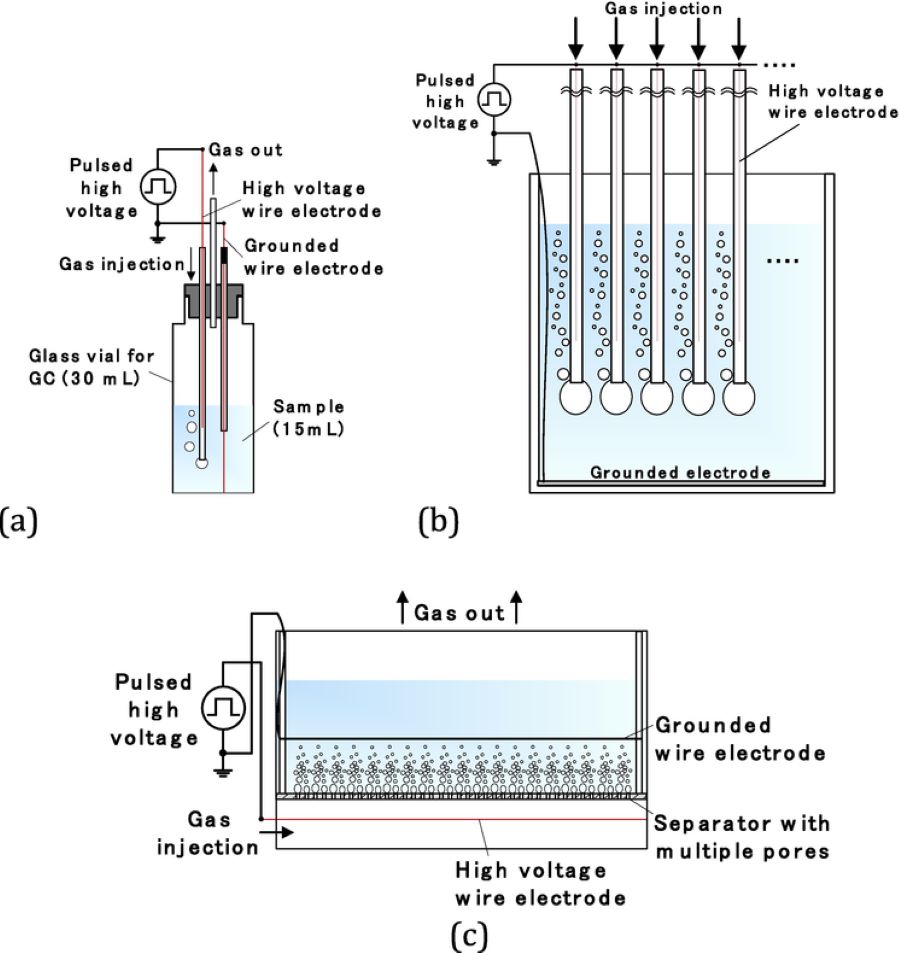In the context of increasing environmental pollution, especially from industrial and domestic wastewater, the demand for modern and sustainable treatment technologies has become urgent. Alongside traditional methods such as biological, chemical, or mechanical treatment, Plasma technology has been emerging as a breakthrough solution. With the ability to generate highly oxidative radicals with strong sterilization and decomposition properties, Plasma opens up great potential for thoroughly treating hard-to-degrade organic compounds while minimizing negative impacts on the environment.
Plasma is the fourth state of matter, existing alongside solid, liquid, and gas. It is formed when a gas is highly ionized, creating a collection of charged particles such as ions, electrons, and free radicals. Thanks to its high energy content and the ability to generate many strong oxidizing agents (such as O•, OH•, O₃), plasma can rapidly decompose complex organic and inorganic compounds as well as kill microorganisms. Compared to traditional treatment technologies, plasma requires no additional chemicals, produces fewer by-products, and can effectively treat even persistent pollutants.
In the environmental field, plasma technology is increasingly gaining attention due to its versatile treatment effectiveness. Plasma has been applied for killing bacteria and viruses in the air, and especially in the treatment of industrial and domestic wastewater. Thanks to its ability to degrade color, odor, hard-to-decompose organic matter, and sterilize, this technology paves the way for sustainable waste treatment systems, helping reduce pollution and protect public health.

Exploring Plasma technology thanks to its diverse treatment effectiveness
Advantages
Limitations
Plasma is widely applied in industrial wastewater treatment, especially in textile dyeing, chemical, medical, and petroleum industries. This technology can rapidly degrade persistent organic compounds, hard-to-remove dyes, and toxic substances that biological or chemical methods often struggle with. By generating many strong oxidizing radicals, plasma improves effluent quality, reduces color and odor, and enhances water reuse potential.
One of plasma’s most prominent applications is the elimination of microorganisms, including bacteria, viruses, and parasites in wastewater. High-energy electrons and free radicals generated from plasma can destroy cell membranes and genetic material of microorganisms, making disinfection more effective without the need for chlorine or other disinfectants. This not only improves water safety after treatment but also limits the formation of harmful by-products.
In addition to wastewater treatment, plasma is also applied in industrial flue gas treatment. This technology can decompose volatile organic compounds (VOCs), toxic gases such as NOx, SOx, and remove unpleasant odors. Integrating plasma flue gas treatment with wastewater treatment systems provides a comprehensive solution, reducing both air and water pollution in a synchronized and efficient way.

Plasma technology in current wastewater treatment processes
Plasma technology offers outstanding benefits in wastewater and flue gas treatment, from effective decomposition of hard-to-treat pollutants to powerful disinfection without chemicals. Although there are still limitations regarding energy costs and initial investment, with advancements in science and technology, Plasma is expected to become more popular and widely applied. This is a sustainable direction for the future, contributing to environmental protection and improving quality of life.